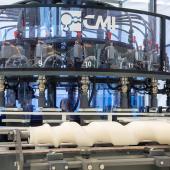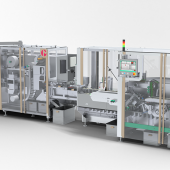How can we protect ourselves against electricity supply problems?

ASK THE EXPERT Processing automation, energy, timed cams, open and modular automation architecture, soft automation, service: in the column on ItaliaImballaggio called “Ask to the Expert”, Luca Stanzani (Packaging and Processing Bosch Rexroth Italia) will provide answers for the specific problems that the readers will tell them about.
Write to [email protected].
Question
I'd like to know if there's any way of reducing the effects on machine performance of sudden voltage changes in the power supply. M.F
In case of a voltage drop, what should we do to ensure the synchronised stop of an automatic machine? G.A.
These are two problems with one single cause: the electricity supply.
Before answering, just let me say that electricity supply and distribution doesn't respond to one set of standards worldwide - it changes considerably in terms of voltage and frequency from one country to another. On top of this, there's the fact that “quality” is a highly critical element in many countries.
Machine manufacturers and production plants live with (or perhaps it's better to say they suffer) these difficulties. Unfortunately, there's no single, definitive solution to all the problems, but there are certain precautions that could be useful.
Mains voltage is often disturbed, dirty, and subject to voltage swings that can reach notable levels (+/- 10/15%). The consequences and risks may directly involve the components, not only leading to failures but also with regards performance and system application repeatability.
To minimise or eliminate these risks, there are systems that basically limit or reduce the effects.
First of all, it's important to clarify the importance of using supply filters. Inverters and servo drives are, in fact, real electromagnetic disturbance generators so the supply filter is needed to reduce the emission of disturbance on power supply. Be careful though: an unsuitable filter can cause effects and anomalies that are non-repeating and therefore hard to identify. In addition, they may not appear straight away, but perhaps after months or even years, making it even more difficult to identify them.
The use of inductive reactances is especially significant in cases requiring: the weakening of current harmonics and the power factor (PFC), the limiting of start-up and connection currents, the limiting of sharp voltage variations and current peaks in the power supply. It is also important to limit the disturbance on the line (current peaks and voltage drops), thereby guaranteeing a longer lifespan for the power semiconductors (diodes, IGBT).
On the other hand, the use of stabilised systems or power supply units offers a lot of advantages.
Firstly, the voltage on the BUS (DC BUS) is stabilised. This means the DC BUS voltage is independent of the incoming power supply and its possible swings and changes. Stabilised systems also have another notable advantage: the DC BUS has a voltage level (750V) generally higher than that of dissipative systems (550V), so more energy is available.
One example in the range of Rexroth products is the stabilised regenerative power supply unit of the HMV-R range, or the new Smart Energy - a stabilised regenerative power supply unit able to temporarily store energy to be used in subsequent cycles, thereby reducing the energy demand on the mains supply.
The synchronised stoppage in the event of a voltage drop works via the simple concept of a balance between the energy generated by the motors during the emergency braking and the energy needed by the motors in order to function. The stabilised power supply unit has two significant advantages in this respect: a DC BUS with a higher voltage (and therefore energy) level (useful for powering the drives/inverter during the stoppage), and a stabilised DC BUS thanks to which a clearly-defined threshold value can be set in the software and used to trigger synchronised machine stop if there is a blackout. The use of capacity, if necessary, could ensure an additional energy supply.
Last but not least, remember that a low-voltage UPS is needed in the event of a voltage drop, to power the PLC and motion/drive controller. This will ensure that the electronics are active in the first moments of the blackout and can therefore pilot the synchronised stop of the whole machine.
For further information www.boschrexroth.it

















